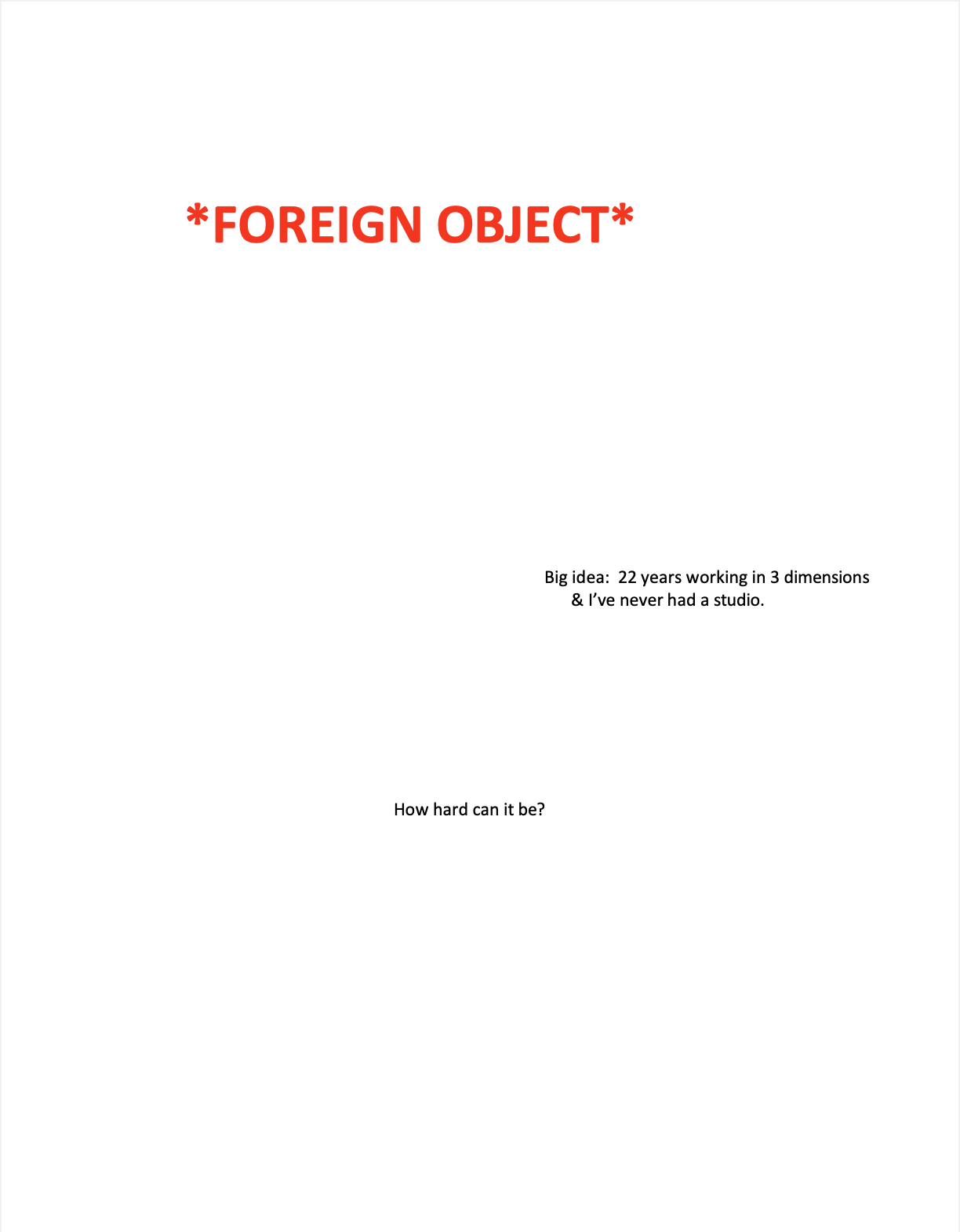ISABELLE PAUWELS
Writing in Three Dimensions

Isabelle Pauwels. Max Experiments. © the artist.
UPDATE
︎september 2024
Some Final Thoughts on Max Experiments (2023-24)
Over the past year and a half, I taught myself to build interactive installations using Max, a visual programming language that allows me to connect hardware devices to each other; process or generate audio and video signals in real time; trigger webcams to record video; and perform cross-modal mappings (i.e. an audio signal affects a video signal). First, I taught myself the basics of Max programming by following a free online course from Kadenze. Then I moved into the studio where I created an environment made of wooden frames I skinned in a variety of mesh fabrics, to which I then added a hammer, a pair of scissors, a paper plate with a face drawn on it, and other objects laying about in the studio. Placing speakers, video projectors and lights in and around the frames and objects, I scripted “patches” in Max that triggered a series of events between the elements. Using webcams and my cellphone, I captured these events and documented my patches using a combination of OBS (a free screen recording app) and recording objects within the Max patch. Watch a brief overview of my studio activities here.
Read more ︎︎︎
︎NOVEMBER 2023 – 1
Documentation of a sculpture with lights/audio controlled by a Max patch I wrote.This is an experiment, not an artwork.
I’ve been teaching myself Max, an interactive software that lets me program lights, route audio, and schedule these events. For this experiment, I semi-randomly grabbed audio files from old video projects,and used my Max patch to sample segments from them.
My Max patch uses an abstraction created by Thomas Fredericks: the [DMXUSBPro] object. Fredericks' patch allows my patch to talk to the DMX controller (a little palm-sized USB module that is sending signals to my lights).
I documented the sculpture using one webcam and my phone. The audio you hear is recorded by the Max patch itself. I used the [adoutput] object to grab the output from the audio driver. It records in real time as I run the patch. I panned the audio after the fact, in Resolve.
︎NOVEMBER 2023 – 2
Documentation of the Max patch in action.This is an experiment, not an artwork.
This is a totally different view of the same sculpture as last week. The video shows the program I wrote in Max. This program runs the audio and lighting events in the sculpture.
I used OBS to do a screen capture of my patch as it plays, and to ingest webcam footage of the sculpture in action. My Max patch uses an abstraction created by Thomas Fredericks: the [DMXUSBPro] serial object. Fredericks' object allows my patch to talk to the DMX controller (a little palm-sized USB module that is sending signals to my lights). I also made 4 abstractions of my own, for the DMX lighting fixtures (at bottom left in the patch). Abstractions encapsulate specific parts of your patch as separate objects, which can be easily re-used in other patches.
︎June 2023
 ︎Foreign-Object.pdf
︎Foreign-Object.pdfproject
Writing in Three Dimensions
Isabelle Pauwels sees in professional wrestling – an absurd arena fueled by consensual violence – the hallmarks of contemporary drama. The art form reduces narrative from being the maker of meaning to being a container for improvisations that exceed the narrative and often occur outside the arena. She wants to try to generate the conditions of professional wrestling in her own narrative-based art practice. Instead of treating the studio as a ten-day window during which she grinds her way through an obstacle course of actors, sets, props, costumes, cameras and lighting changes, she will use the studio as a research space for improvisation. Using Max, a visual programming language, which can trigger and process video and audio signals, and Sudowrite, An A.I.- powered writing app, she will work back and forth between the mediums of text, sculpture, and performance.
Support in artistic practice received in 202
PRACTICE
Pauwels’ videos and installations explore our shared investment in the world as a compilation of representations, narrative conventions, and clichés. We engage with this world simultaneously as a spectator and as a performer. For the artist, the viewer’s split awareness– of the external world, of themselves engaging with it, and of their being implicated as part of an audience – mirrors our daily contemporary reality, which we experience as distraction, interruption, and rapidly shifting frames of reference.
BIOGRAPHY
Isabelle Pauwels is currently based in Montréal. She received a BFA from Emily Carr Institute of Art and Design (Vancouver) in 2001, and an MFA from the School of the Art Institute of Chicago in 2006. In 2009 she was the inaugural winner of the Brink Award, granted to an early-career artist working in Washington, Oregon, or British Columbia. In 2013 she was a finalist for the Sobey Award. Recently her work has been exhibited at AXENÉO7 (Gatineau), Dazibao (Montreal), the Musée d’art contemporain de Montréal, Unit 17 Gallery (Vancouver), and at the Experimental Media and Performing Arts Centre at Rensselaer Polytechnic Institute in Troy, New York.